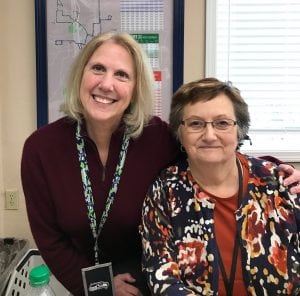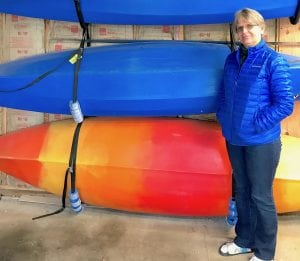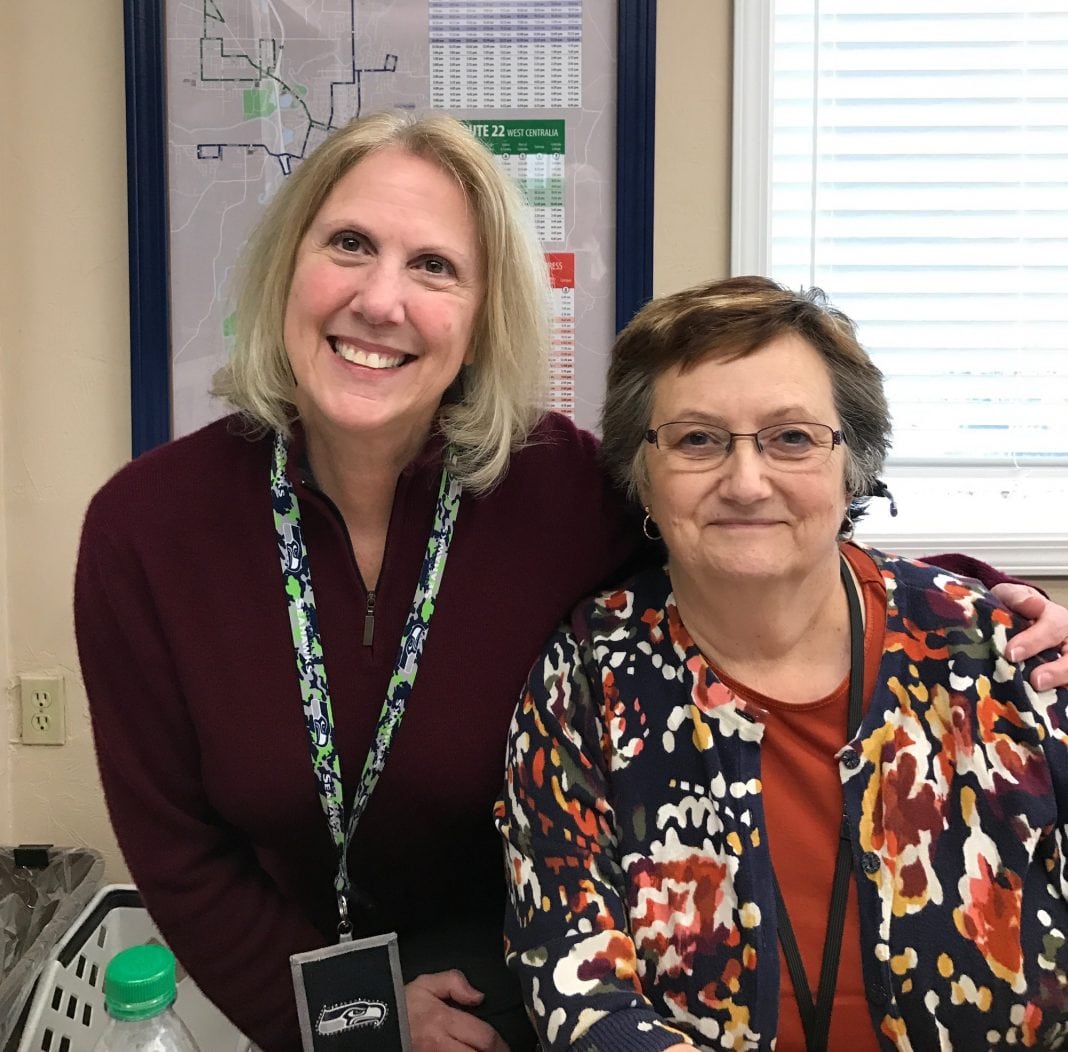Imagine being visually impaired or in a wheelchair or having other mobility challenges. What do you do if you can’t drive? That’s when public transportation such as Twin Transit’s paratransit service can truly make a life-changing difference.
While many people with mobility challenges use regular bus routes, there are times they may need to call for assistance from paratransit, a service mandated by the Americans with Disabilities Act (ADA). Paratransit can serve not only those with physical challenges like blindness, but also cognitive challenges such as autism. “It’s not about the diagnosis, though, it’s about the ability,” explains Twin Transit Manager, Rob LaFontaine.

Paratransit eligible riders simply need to call the Twin Transit office a day ahead of time to schedule a ride. Staff members Donna and Maggie basically operate like dispatchers to handle the reservations. Twin Transit also offers free travel training to help those new to riding the bus system.
It’s one thing to hear about these services overall. It’s another to hear about the differences transportation can make in the lives of people in our community.
Bonnie Cooper
Bonnie was born hearing impaired. She can read lips and had a cochlear implant a few years ago. She realized she was losing her eyesight when she was in her 30s. She can see straight ahead, as through a peep hole, but has no peripheral vision at all.
Bonnie was living in a small town in Oregon and after her last child graduated, the Blind Commission suggested that Bonnie move to Portland where there would be so many more services available to her. Staff from the commission taught her how to ride the train system and the bus system, and how to make transfers. She’s not sure whether to laugh or cry when she tells the story of her first transfer. “I got off the bus and there was a young man with spiked green hair and one of those neck collars with spikes. This is the big bad city, drive-by shootings, all kinds of crime,” Bonnie explains. “I was terrified!” But she adjusted.

The Blind Commission suggested she open a coffee shop in a federal building, which she ran for four years. Then so many things changed it was mind-boggling. Her rent skyrocketed and she couldn’t move just anywhere because she needed an easy commute. Then one day on the way home from the coffee shop she was hit by a car. Thankfully she wasn’t seriously injured, but it terrified her.
Bonnie ended up moving to Centralia. “For a while I was overwhelmed and didn’t do anything. Finally, I decided I needed to get out of the house,” she explains. So she called Twin Transit.
“I talked to Donna and she was so great. She would meet me for bus rides and show me the routes and transfers,” Bonnie explains. However, there were several places that Bonnie couldn’t navigate once she got off the bus. “Crossing busy streets, making your way through the parking lot with cars coming and going and backing out. I can’t see them in my peripheral vision. It’s too dangerous. I just can’t do it.”
Bonnie has a lot to consider everywhere she goes. There aren’t always marked crosswalks, sometimes the sidewalk edges are hidden under debris or ice or they’re uneven. Then Donna told her about Twin Transit’s paratransit service. Bonnie could call them and schedule a ride and they would take her right to the door.
Bonnie is thankful for Twin Transit and its staff. “They are all so sweet. The drivers will ask where you’re going, what time you’re getting picked up. They’re really great,” she says with a smile.
Gabe Markstrom
Gabe is a 22-year-old Centralia native with a hilarious sense of humor, killer wit and mad technical skills – and he is visually impaired. “It’s stereotyping to call us all blind,” he explains. “Blind is not being able to see at all, but I have some vision.”

Photo credit: Nancy Keaton
Visually impaired since birth, Gabe didn’t ride the bus until his freshman year when he attended the School for the Blind in Vancouver, Washington. Then as his vision got worse, he applied to Twin Transit for their paratransit service. “I ride the fixed route a lot for going to places like the mall and Walmart. Paratransit is mostly helpful when I’m going to areas I don’t know or where I don’t know the routes, or places that are farther away,” Gabe explains. You can tell he takes pretty much every situation with a sense of humor. When asked about interesting experiences riding paratransit, he smiles as he says, “It was when we couldn’t find the entrance to one place, even the bus driver couldn’t find it.”
Gabe wants others to know, “Paratransit riders are just like everyone else. We want to be treated like everyone else, we want to be as capable and independent as everyone else. Paratransit is just another way for us to get around.”
To learn more about Twin Transit’s paratransit service, visit the Twin Transit website or call 360-330-2072.
Twin Transit provides local paratransit transportation service for eligible passengers in our community, however we are not affiliated with Paratransit Services, Inc. For more information, please click here.
Sponsored











































